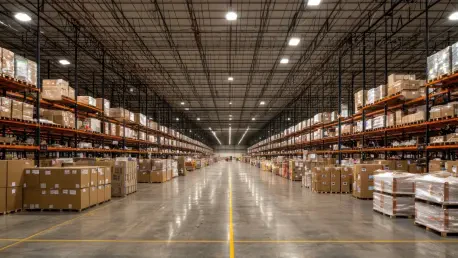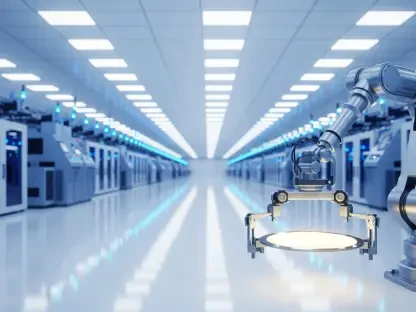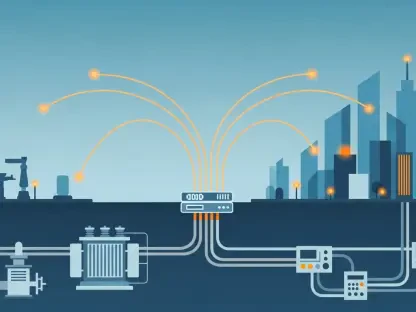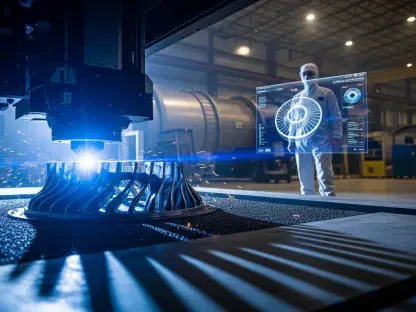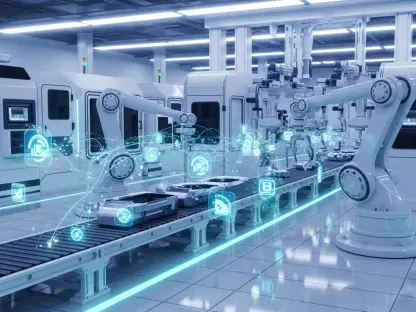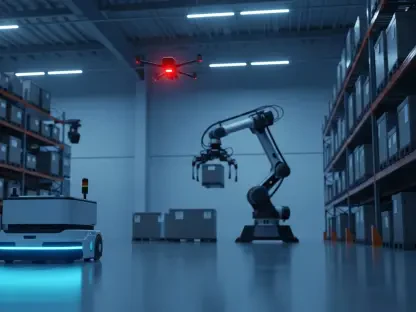The transformative impact of robotics in warehouse operations has become notably prominent, driven by advancements in artificial intelligence and state-of-the-art robotic technologies. These innovations are significantly enhancing precision, efficiency, and versatility in key areas such as inventory tracking and material handling, addressing longstanding industry challenges. Moreover, they are expanding the toolkit available to developers of AI-driven robotic applications, fostering greater flexibility and capability within the industry. The current landscape is marked by the integration of sophisticated systems capable of navigating complex environments, redefining traditional practices and positioning robotics as essential to modern operational strategies.
AI-Powered Drones in Inventory Management
Automating Inventory in Challenging Environments
At the forefront of revolutionizing inventory processes is the application of AI-powered drones, particularly effective in challenging settings like dark and cold warehouses. Exemplifying this trend is the Corvus One Autonomous Inventory Management System from Corvus Robotics, engineered to execute tasks with remarkable efficiency. This system operates independently in environments devoid of light, demonstrating a robust capability to scan barcodes, count cases, and identify stockouts with precision. By leveraging computer vision and an AI large world model, the drone achieves a sophisticated form of learning-based autonomy. Such technological prowess enables it to adapt to varied warehouse conditions, optimizing inventory tracking processes and facilitating seamless operations even in the most demanding scenarios.
Integration of Advanced Software Solutions
The fusion of advanced software solutions with drone technology marks a significant evolution in inventory management. One notable example is the integration of Honeywell’s SwiftDecoder software within drone systems, enabling the capture of multiple barcodes simultaneously for expedited inventory counting. This integration represents a leap forward in processing speed and efficiency, vital for maintaining the pace of modern warehouse operations. Software enhancements ensure drones are resilient to challenging conditions, like low temperatures, thus expanding their adaptability across different environments. Collectively, these technological innovations culminate in a robust framework, fine-tuned for precision, providing valuable insights and contributing to more streamlined and effective inventory management strategies.
Enhancements in Material Handling with Autonomous Mobile Robots
Streamlined Operations with AMRs
Autonomous Mobile Robots (AMRs) are redefining material handling practices, with technologies like Seegrid’s Autonomous Buffer Management at the forefront of these developments. The solution optimizes buffer management by enhancing the precision of material staging processes. By integrating with existing workflows, AMRs provide seamless automation of material handling tasks, reducing bottlenecks effectively and enhancing the flow of operations. Facilities benefit from increased operational speed and greater throughput, positioning themselves to meet higher demands and maintain productivity levels. This transition to automation signifies an essential shift toward utilizing technology to streamline operations, allowing organizations to remain competitive in an increasingly dynamic market landscape.
Shifting Human Labor to Strategic Tasks
The deployment of AMRs in warehouse operations redefines the allocation of human labor, enabling staff to focus on higher-value tasks while automation takes charge of routine operations. This strategic approach transforms productivity dynamics, reducing operational disruptions and enhancing system efficiency. By automating basic material handling tasks, facilities optimize labor use, freeing human resources for roles that necessitate strategic decision-making and critical thinking skills. The alignment of automation with human labor represents an evolutionary step in warehouse management, enhancing coordination and productivity levels while paving the way for sustainable growth and enhanced profitability in the sector.
Robotic Grippers and Innovative Handling Solutions
Versatile and Energy-Efficient Grippers
The introduction of advanced robotic grippers, such as OnRobot’s VGP30 vacuum gripper, is advancing the role of robotics in warehouse operations, particularly for heavy material handling tasks. Designed to secure loads up to 30 kg and adjust to off-center boxes, these grippers offer a compelling solution for enhancing efficiency. They also incorporate energy-efficient technologies that intelligently regulate vacuum levels, significantly reducing operational costs. By featuring low noise levels and optional real-time feedback on airflow, these grippers are perfectly suited for collaborative applications. This technological innovation adds a layer of versatility, enabling facilities to manage material handling tasks more effectively while optimizing resource use and cost-efficiency.
Heavy-Duty Robots for Complex Applications
Heavy-duty industrial robots, like Fanuc America’s M-950iA/500 model, are tailored for handling substantial payload tasks, extending versatility in managing large components. Built with an adaptable serial-link design that offers a wider motion range, these robots excel in navigating tight workspaces, which is crucial for complex operational environments. Their capability to lift large parts for tasks such as palletizing emphasizes their utility in supporting intricate manufacturing operations. Optional enhancements increase accuracy and stiffness for high-precision applications like friction stir welding, drilling, and riveting. Overall, these robots provide a sophisticated solution for demanding industrial tasks, showcasing robotics’ evolving capability to handle complex material handling and processing roles.
Accelerating AI-Based Robotics Deployment
Expedited AI Development Tools
Developing AI-driven robotic solutions has become more efficient with tools like Universal Robots’ AI Accelerator, crafted in collaboration with NVIDIA. This comprehensive framework expedites the deployment of AI-based robotics by offering robust functionalities such as pose estimation and object detection. By reducing development times, the toolkit helps mitigate risks associated with technological deployment, enabling rapid introduction of innovative AI applications in warehouse settings. This advancement is pivotal in positioning industry players to swiftly adapt to evolving demands, ensuring that technological deployment is streamlined, efficient, and responsive to market needs while reinforcing their competitiveness.
Innovations in Collaborative Robotics
The profound impact of robotics on warehouse operations is becoming increasingly evident, sparked by rapid advancements in artificial intelligence and cutting-edge robotic technologies. These innovations are redefining warehouse efficiency, precision, and adaptability, especially in crucial processes like inventory management and material handling. By addressing long-standing industry issues, robotics is revolutionizing the operational landscape. The tools available for developers creating AI-driven robotic applications are expanding, offering enhanced flexibility and capabilities that were previously unimaginable. The present-day setting showcases the integration of advanced systems equipped to maneuver intricate environments, thus reshaping standard practices. This evolution cements robotics as a vital component of today’s operational strategies within warehouses. Organizations that embrace these innovations stand to gain significant advantages, as robotics continues to evolve, playing an indispensable role in optimizing efficiency and productivity while setting new industry standards.
